Not sure about living in an eco-village? Here’s how to decide
We only recently got turned on to this idea of intentional communities, thanks to this guy as well as his connections to others who are doing similarly cool things. Through introductions, my husband and I attended an Alegria Village webinar and became more curious about what it’s like to live in an eco-community like this. (If you’ve been following Zac Efron’s “Down to Earth” adventures, you may have noticed he spent some time exploring sustainable communities in Costa Rica. Here’s Zac pictured with Stephen Brooks, one of the founders of Alegria Village.)
This trip to Costa Rica I decided to make the effort to go check out Alegria for myself. Knowing that almost all of the 140 lots have already been sold (at time of writing there are about 10 left), I still wanted to take advantage of the weekly tour and get a sense of the place and what they’re up to in the mountains there outside a little town called San Mateo about one hour from the capital city of San Jose.
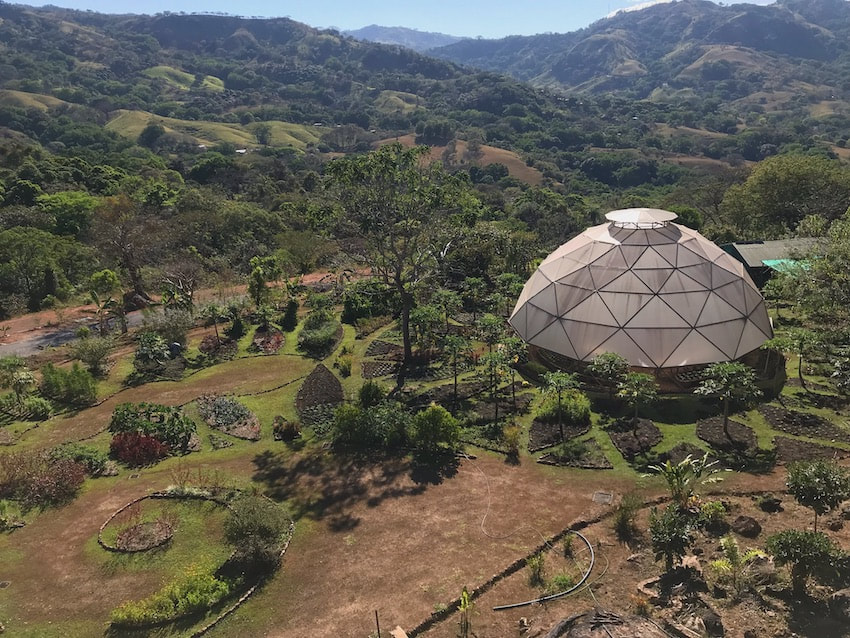
Getting there is…(kind of complicated)
I had nested down at nearby Poza Blanca, a lovely hotel perched along the Machuca River and situated about 25 minutes away from Alegria. Poza came highly recommended to me by Stephen as one of the nearby options since there’s nowhere to stay⏤as of yet⏤at Alegria. An early-morning taxi picked me up at Poza and although I had clear Waze instructions from Jai, one of the hosts at Alegria, my driver sounded confident he knew where he was going: “la ecovilla.”
Well it turns out, there’s actually a PLACE called La Ecovilla and it’s right down the road from, or perhaps the other side of the mountain from, Alegria Village. I tried not to panic when we stopped in front of the wrong place five minutes before the Alegria tour was to begin.
With some guidance, my driver fumbled us along until we finally found the Alegria entrance. Turns out, one of his neighbors was working the welcome station. She works at Alegria. Much to my relief, I wasn’t the furthest lost soul that morning. One other car load didn’t show up for two more hours.
This trip to Costa Rica I decided to make the effort to go check out Alegria for myself. Knowing that almost all of the 140 lots have already been sold (at time of writing there are about 10 left), I still wanted to take advantage of the weekly tour and get a sense of the place and what they’re up to in the mountains there outside a little town called San Mateo about one hour from the capital city of San Jose.
Welcome circle and introductions: Who are you, why are you here, and what kind of fruit are you?
We gathered at the elevated Yoga Shala overlooking verdant mountains and the biodome with geometric garden designs below. Fruit trees and herbs, vegetables and leafy greens like kale, grew proliferously. In our grounding circle, Jai (pronounced like “gi” in giant, I believe), a 13-year resident of Costa Rica and transplant from Toronto told us her story and how she came to Alegria Village. She asked us each to do the same, tacking on, “If you were a fruit, what fruit would you be?”
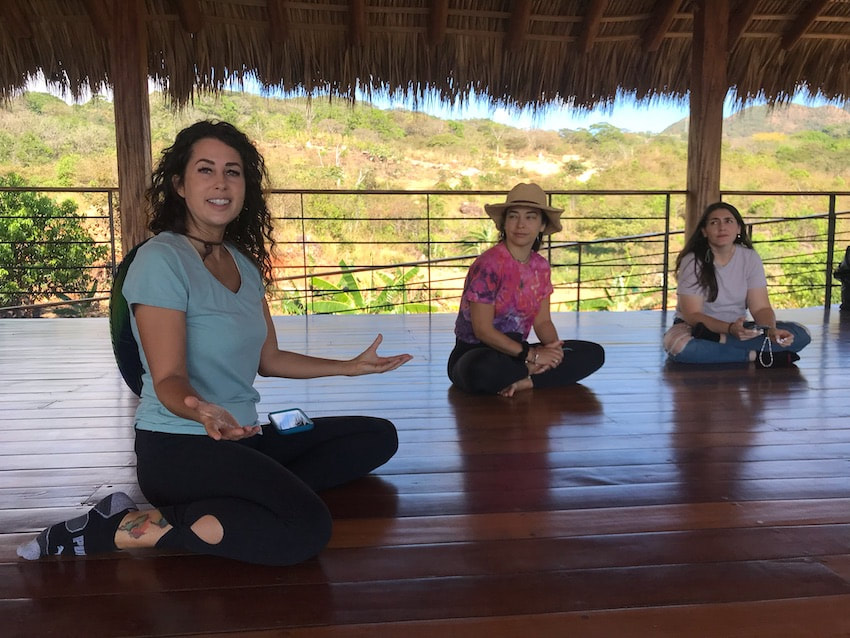
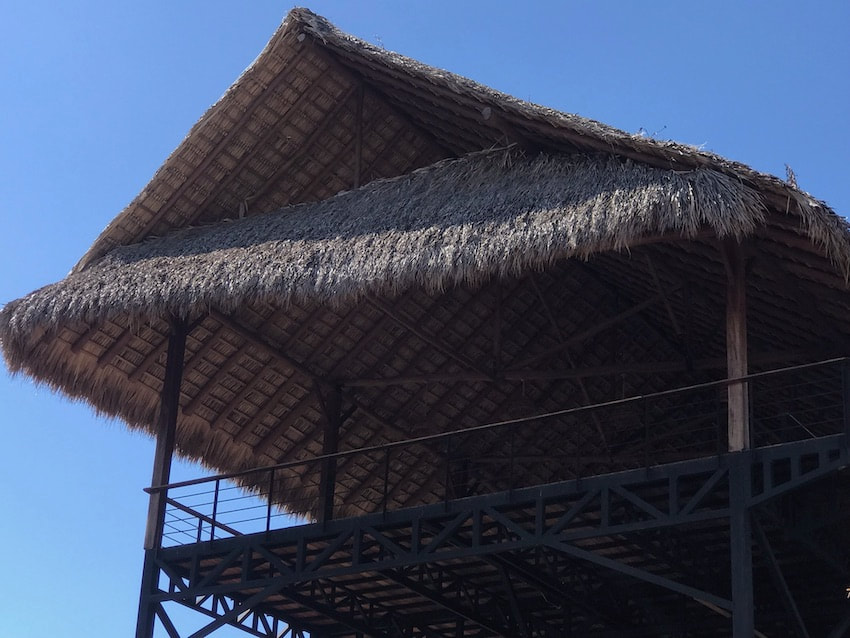
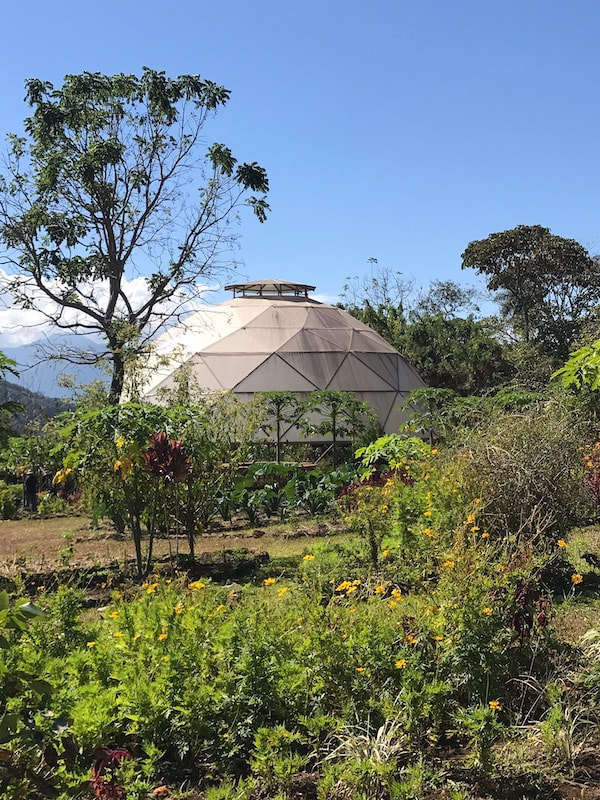
There was another American girl, came to Alegria by way of mutual friends and Stephen and a whole Burning Man connection. She had already purchased a lot with some family members. A French girl had been looking for this intentional way of life kind of community and never knew it existed until she found Alegria. She too had purchased a lot. A German couple there with their little girl who was about five years old, along with the guy’s mother, were there to see what’s possible outside of the increasing confines of German education (he had been a teacher) and tightening COVID restrictions in their country⏤wanting to create a life for their daughter in which she grew up free to discover the world in her own way, to be unschooled or schooled or combination schooled (an alternative schooling community has already emerged within Alegria).
Then it was my turn to share and I said I was representing myself and my husband and was feeling increasingly disenchanted with the way things were going in my country (the U.S.), wanting to find some place where we and our like-minded friends might buy land and build together. I was just exploring and open and interested in getting the vibe. (I was a pineapple, by the way, because they almost never let me down when I bite into a chunk of them and I am fascinated that here you can take that lopped off “crown,” plant it in the ground, and it regenerates into a huge pineapple plant.)
Clearly, i was in good company if ever there were a concern about living in community and wondering who you’d have to “deal” with.
First, and lasting impressions of Alegria Village
The next thing that struck me was that within the Alegria system, you pay a flat HOA fee every month rather than having to “contribute” your time and energy. Giving yourself to the community is purely voluntary so if it’s just not your thing to jump in there and be social and co-create, then you don’t have to. The HOA fee is $.10/square-meter so whatever your lot size is, that’s how they determine your HOA fee.
Mind you, most of the remaining lots are 3,400sm+/- which is a whopping 36,000 square feet. The HOA fee would be roughly $340/month. Your fee also gets you a heaping basket of fresh produce every week and there are plans underway to sell excess produce at local markets to help offset the cost of the HOA.
Then it was my turn to share and I said I was representing myself and my husband and was feeling increasingly disenchanted with the way things were going in my country (the U.S.), wanting to find some place where we and our like-minded friends might buy land and build together. I was just exploring and open and interested in getting the vibe. (I was a pineapple, by the way, because they almost never let me down when I bite into a chunk of them and I am fascinated that here you can take that lopped off “crown,” plant it in the ground, and it regenerates into a huge pineapple plant.)
Clearly, i was in good company if ever there were a concern about living in community and wondering who you’d have to “deal” with.
The lots are pretty big⏤big enough for multiple families in most cases, and they’re going for anywhere from $180K to $250K-ish. Some are more desirable than others, obviously, and getting there “last” means you don’t have as much to choose from.
On the other hand, everything is in full swing and building is about to begin on the first batch of lots. (80% of the lots sold are already permitted and ready to go.) I did eyeball a couple of jungle lots (think trees and shade).
Then comes the building. Your choice how to do it.
Want something big and fancy? Have at it.
Want a mobile home with a deck? No problem.
Care to build a tiny A-frame home? Yes!
They have trusted builders they recommend and we also have recommendations from our friend Ed. (Roughly $30K to $40K for A-frame tiny home construction or a container house.)
Mind you, most of the remaining lots are 3,400sm+/- which is a whopping 36,000 square feet. The HOA fee would be roughly $340/month. Your fee also gets you a heaping basket of fresh produce every week and there are plans underway to sell excess produce at local markets to help offset the cost of the HOA.
Then it was my turn to share and I said I was representing myself and my husband and was feeling increasingly disenchanted with the way things were going in my country (the U.S.), wanting to find some place where we and our like-minded friends might buy land and build together. I was just exploring and open and interested in getting the vibe. (I was a pineapple, by the way, because they almost never let me down when I bite into a chunk of them and I am fascinated that here you can take that lopped off “crown,” plant it in the ground, and it regenerates into a huge pineapple plant.)
Clearly, i was in good company if ever there were a concern about living in community and wondering who you’d have to “deal” with.
Split the land with two other families or interested parties? That can also be arranged. Drops your investment down significantly and your HOA cost as well. Then you just individually build your own homes. You have four years to do it.
Next we made our way down to the gardens to sample things like gavilana, a bitter leaf for cleaning the blood and settling stomach issues, and flor de jamaica, a type of hibiscus with a sweet-tart and pulpy leaf, its benefits known throughout South America, Egypt and Asia for lowering blood pressure, banishing bacterial infections, lowering fever, even increasing metabolism.
Jai told us of a local Indian tribe called the Huetar that come and walk the land, showing and teaching about all kinds of medicinal plants yet unknown.
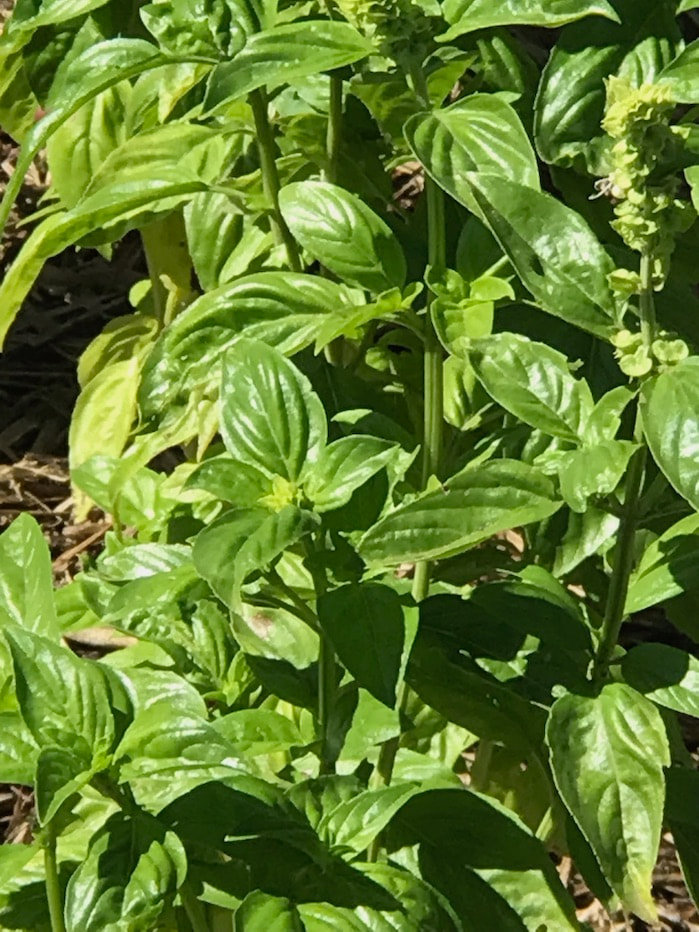


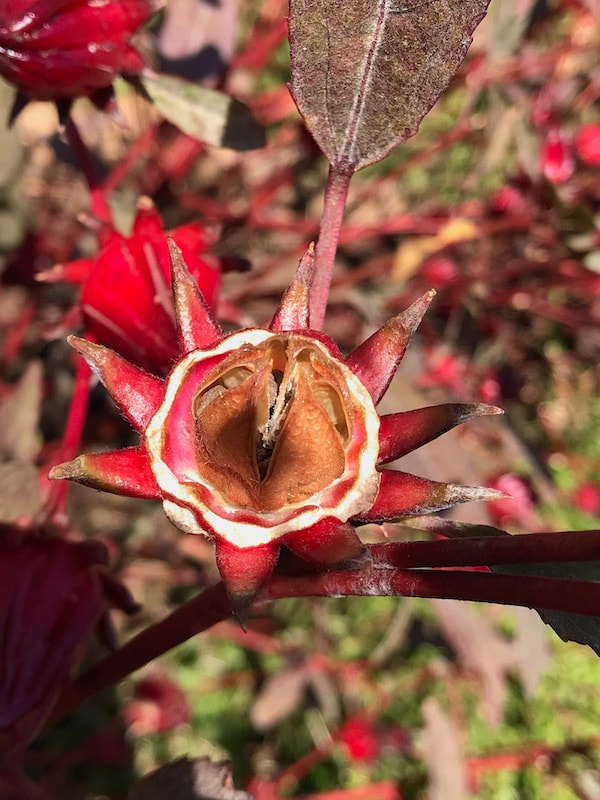
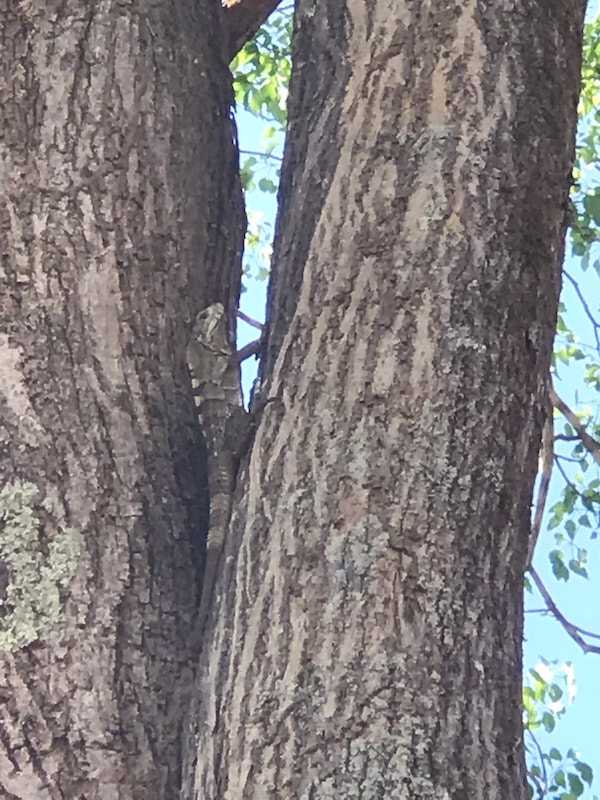

Science + biology + ecology = Planting and living in line with nature
We also talked at length with Arnoldo, a scientist and expert in ecologically sustainable agriculture and living, before we set off to look around at different lots. Mountain breezes offset the blazing sun in most cases and the views from individual lots allowed for lovely mountain vistas. We talked with Stef, another guide with Costa Rican heritage but who grew up in the States, of architectural planning and designers who knew how to build in order to create optimal coolness, elevated views, and oversee eco-friendly construction and use of resources.
Still, air conditioned rooms are recommended. (Most modern CR construction uses wall-mount units which are more environmentally friendly, cost-efficient and effective.)
By the time we’d gotten in and out of vehicles a few times, I was pretty beat and anticipating the long travel afternoon ahead of me. My taxi back to Orotina, a bus back to Jaco, and multiple buses wee on my mind, as I planned to make my way down to Uvita.
Is Alegria Village for me? Do I want to live in an intentional community? If so, is this the place?
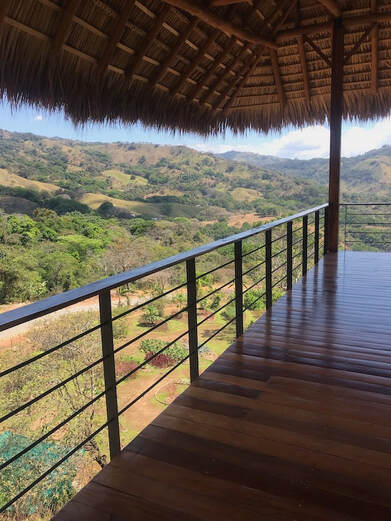
Could I see myself here? Definitely.
Could I see myself bringing friends here? Oh yeah.
And renting it out when we’re not here? Yup, that’s an option as well.
Yet so much is still in the vision stage as first homes are only now planning construction. Thankfully, Alegria handles all the permitting and convoluted stuff that Ticos as well as foreigners have to contend with if building in Costa Rica.
But by end of summer, there will likely be a restaurant and probably an office space available for community rental, perhaps a cafe and some other buildings and amenities, and the first homes will have been built. Let’s not forget the pool and naturally heated hot tub! The dream finally coming together.
Every road we traversed, we were held up by backhoes and bulldozers, clearing rocks, building drainage gullies, flattening surfaces. The work is happening, you just have to use your imagination and “get it” if you want to be here and create something here.
How is Alegria different from other intentional communities around the globe?
“Inclusivity,” Jai explained.
You don’t have to know someone to “get in.” All are welcome to come see or participate in webinars, get one-on-one support while looking, and even the local Tico community is included in all Alegria does. Alegria is not sequestered from its environs but rather is an integrated part of it. The community is invited to Alegria social and community-building events and all the workers are considered part of Alegria, not simply “working for” the eco-village.
There are many benefits to consider yet also challenging to weigh the options against the feeling of “home” I felt as I rolled into Uvita that night after a hellacious day of travel. (I made it by taxi to Orotina, bus to Jaco, then stood on the side of the road waiting almost two hours for a bus to Quepos that never came so I broke down and took a $130 taxi all the way to Uvita. You can count on a couple of surprise expenditures like this every time you’re in CR!)
Independent options: Looking at local “lotes”
Now I’m waiting to connect with Pablo whom a group of us met with last summer here in Uvita, looking at land. He’s stuck behind a bulldozer, too, so we might not see each other today.
Challenges in Uvita: Prices are going up. Tico homes are more affordable, but potentially (?) less desirable. When you buy a place completely on your own, you have to figure out somebody you can trust to take care of it and look out for your property while you’re not there. (I OFFICIALLY HAVE SOMEONE I CAN TRUST! The value of making friends in Costa Rica.)
Lots for sale and lots with Tico houses
Among the pros and cons of looking and buying, if you’re buying land independently, you’re gonna have to deal with all the permitting and such. I’m no expert, but by all accounts, doing it “on your own” sounds nightmarish. Either way, you’ll need a good lawyer and someone on the ground whom you can trust and count on to help walk you through it all.
There’s a lovely lot here in Ballena for like $50 to $60K which looks to be at least a couple thousand square meters (more than 20,000sf let’s say). You could buy that and then start the long painful process of getting permits for whatever type of house you wanna build. It’s tempting though, to start from scratch.
Then again, there’s an already-built container house in the same general vicinity, with a nice little garden and extra land big enough for a casita. So it’s all move-in ready and the rest you can just take it as it comes, and as you can afford to build or deal with the building process. $160K for a 2BR. Living amongst Ticos (my preference) and here in Ballena, one of my fave places to be.
What about floods, tsunamis, earthquakes, natural disasters?
While my mother’s advice is to choose a higher elevation for obvious rising sea-level reasons, there are drawbacks to being in the mountains. Rain and mudslides for one. When it rains⏤and it rains like a mofo⏤you’re dealing with getting up and down unpaved roads, which is the norm in most parts of Costa Rica, especially the mountains. If there’s significant mud and pouring water, you might be stranded. Worse yet, the land could give way and there goes your house.
Or you could be stuck behind a bulldozer like my real estate dude was yesterday. He couldn’t even leave home to meet me!
Earthquakes happen on a micro scale almost daily here in CR so you don’t really feel it but I’ve been informed we’re in the “ring of fire” so there’s tectonic plate movement going on all the time. Apparently, there’s a big one about once a decade. Whether you’re on a mountain or lower lands and closer to the water, earthquakes can do damage and it’s a fact of life. (I was just gabbing with another American woman about how we now have tornadoes in Pennsylvania that go ripping through neighborhoods, lifting trees up out of the ground and wiping out houses. Never had that before either. So there’s always a risk of living anywhere, really.)
Being closer to the water has me wondering what about flooding. I asked the woman at the yoga place this morning about this and how she chose to build where she did. She pointed out the mudslide issues that come with the mountains and that her place has excellent drainage and slight elevation in terms of how things are built. Other than, it’s kind of a crap shoot. You might get wiped out or it might never happen and you get to live in the exquisiteness of your dream.
According to WorldData.info, the last tsunami in Costa Rica was on September 2, 1992, and the last one that took a human life and cost significant damage to homes was April 22, 1991.
“A tidal wave of up to 3 meters killed 3 humans and destroyed vast areas.”
The risk, from that perspective, feels a bit more palatable. I feel more at risk of getting caught driving in a flash flood on a back road in the suburbs of Philadelphia than I do getting swept up in a tsunami hanging around Ballena, Uvita, Puntarenas.

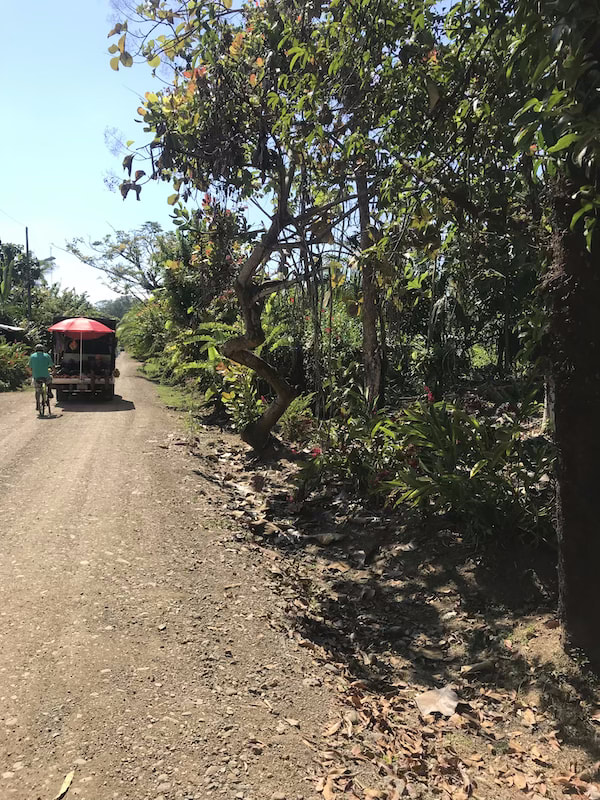
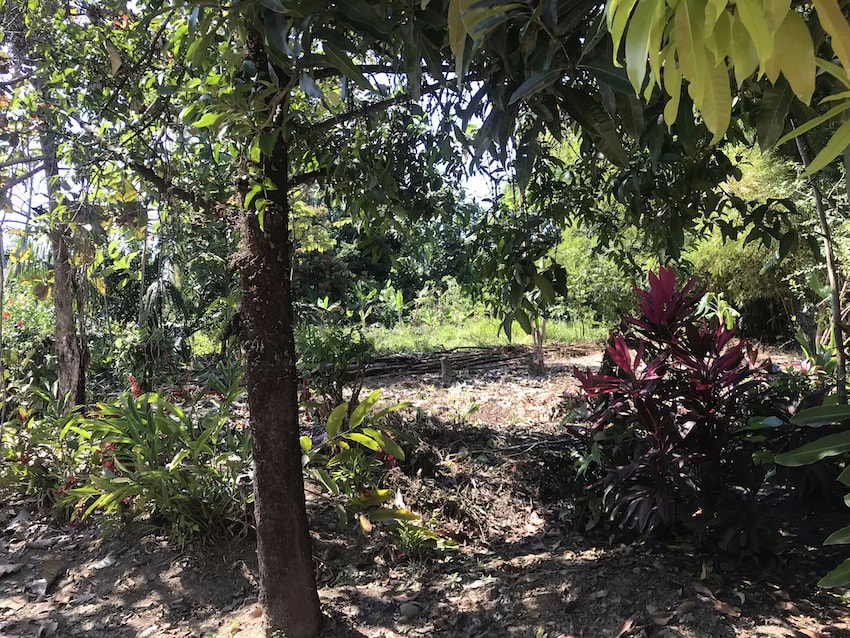
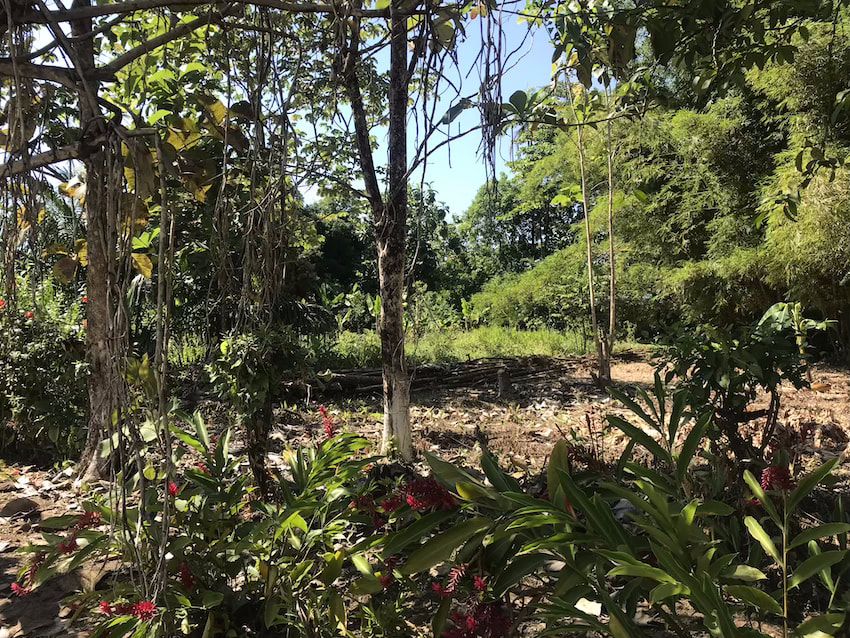
Want updates about eco-living in Costa Rica?
Sign up for occasional information as the experience unfolds.
all rights reserved, 2023.